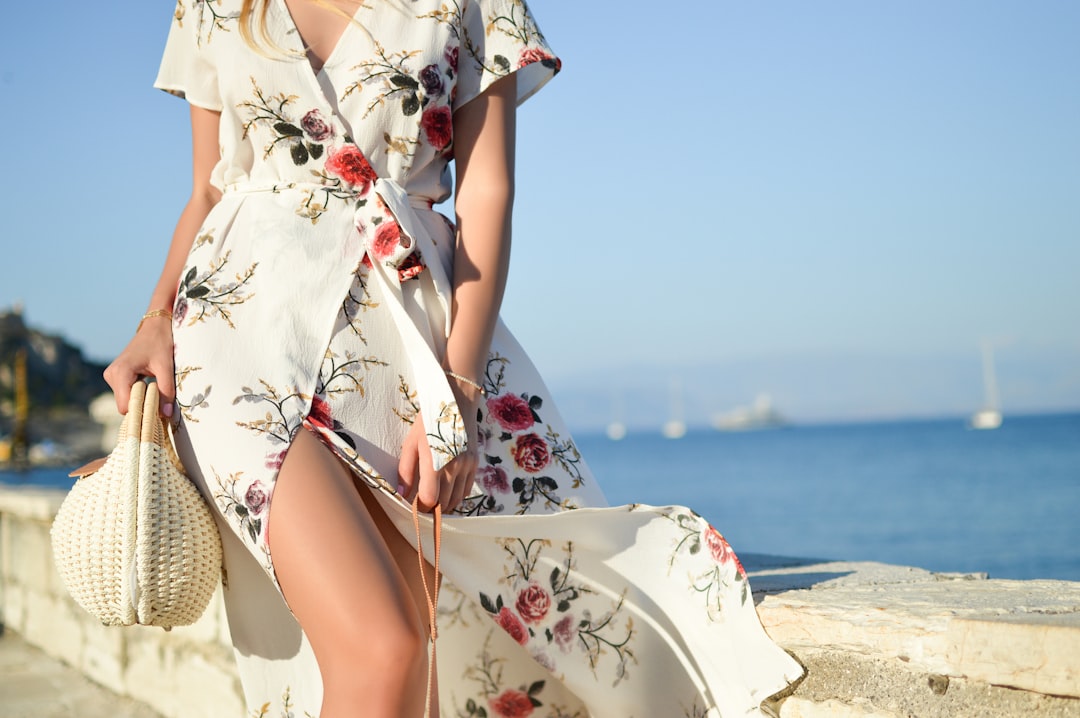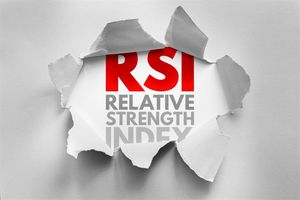 Photo from Unsplash
Photo from Unsplash
Originally Posted On: https://www.bohemianbeachboutique.com/style/bohemian-fashion-more-than-a-trend-a-cultural-revolution/
Bohemian fashion, often referred to as “boho” style, is a distinctive clothing aesthetic that draws inspiration from the unconventional and artistic way of life associated with the bohemian culture. It’s a style that values freedom, self-expression, and individuality. At its core, bohemian fashion is characterized by its embrace of loose, flowy garments, rich and earthy colors, and an array of textures and patterns, such as paisley, floral, and tie-dye. It often incorporates natural materials like cotton, linen, and leather, contributing to its laid-back and effortless feel. Bohemian fashion is also notable for its love of accessories, from layered necklaces and bangles to wide-brimmed hats and fringe bags, adding a touch of the exotic and the artistic to every outfit.
Significance of Bohemian Fashion
Bohemian fashion transcends mere trendiness; it’s a style that resonates with a deeper cultural and philosophical significance. It embodies a spirit of non-conformity and celebrates individuality. It’s about breaking away from the rigid constraints of conventional fashion, offering an escape from cookie-cutter styles. Bohemian fashion invites people to express themselves authentically, drawing from their own unique tastes and inspirations. It’s a fashion style that encourages wearers to explore their inner artists and to embrace the wild, free-spirited aspects of their personalities.
Preview of the Article’s Key Points
In this article, we’ll delve into the multifaceted world of bohemian fashion and explore why it extends beyond being a mere fashion trend. We will discuss:
- The Roots of Bohemian Fashion: Delving into its historical origins and the influential artists and movements that have shaped the style.
- Bohemian Fashion as a Lifestyle: Exploring how boho fashion extends into lifestyle choices, including a connection to nature and a rejection of conventional norms.
- Bohemian Fashion and Self-Expression: Highlighting how it serves as a canvas for personal style, encourages creativity, and fosters individualism.
- Bohemian Fashion’s Influence on Other Industries: Examining how it has influenced interior design, the music scene, and even wedding planning.
- The Sustainability Aspect: Discussing the ethical and sustainable fashion practices that align with the bohemian ethos.
- The Versatility of Bohemian Fashion: Addressing its adaptability for everyday wear, special occasions, and different seasons.
- The Global Appeal of Bohemian Fashion: Exploring its presence worldwide and addressing questions of cultural appreciation and appropriation.
- Bohemian Fashion: A Social and Cultural Statement: Uncovering the political and social movements that have embraced boho aesthetics and its role in challenging beauty standards.
By the end of this article, you will have a comprehensive understanding of why bohemian fashion is so much more than a trend – it’s a lifestyle, a philosophy, and a statement that has deeply influenced our culture and the way we express ourselves through fashion.
II. The Roots of Bohemian Fashion
Historical Origins
Bohemian fashion draws its roots from a rich tapestry of history, art, and cultural movements. The term “bohemian” originally referred to the Roma people, often inaccurately called “gypsies,” who were believed to have originated in Bohemia, a region in the Czech Republic. The Roma people were known for their nomadic lifestyle and vibrant, eclectic clothing. This early association with the unconventional and the artistic laid the foundation for the bohemian fashion style.
Furthermore, the mid-19th century saw the emergence of the bohemian lifestyle in the artistic communities of Europe, particularly in the Montmartre district of Paris. This era marked the birth of the “bohemian” identity as it is understood today. Artists, poets, writers, and musicians, seeking freedom from societal norms and embracing a non-conformist way of life, played a pivotal role in shaping the bohemian fashion movement. They were the embodiment of the “starving artist” trope, often living in modest circumstances while pursuing their creative passions. Their clothing mirrored their free-spirited mindset, characterized by a lack of structure and a strong affinity for colors, patterns, and fabrics that exuded a sense of individuality.
Influential Bohemian Artists and Movements
Bohemian fashion is intrinsically tied to the artists and movements that embraced this unconventional lifestyle. Notable figures like Oscar Wilde, who was known for his flamboyant style and witty wit, embodied the bohemian spirit in the late 19th century. His attire often included velvet suits, lace cuffs, and extravagant accessories, making a profound impact on the fashion world.
In the early 20th century, the Bohemian lifestyle flourished in Montparnasse, Paris, attracting luminaries such as Pablo Picasso and Jean Cocteau. These artists not only contributed to the bohemian aesthetic but also played a pivotal role in shaping modern art. The Surrealist movement, with its emphasis on the subconscious and the bizarre, brought forth a style that was both dreamy and otherworldly, influencing the bohemian fashion landscape.
The counterculture movements of the 1960s and 1970s were another significant turning point in the evolution of bohemian fashion. The “Hippie” culture, with its advocacy for peace, love, and freedom, embraced bohemian clothing as a way of challenging societal norms. Tie-dye shirts, bell-bottom pants, and an array of fringe and leather garments became symbolic of the era.
The Evolution of Bohemian Style
The bohemian style has continued to evolve, adapting to the changing cultural landscapes and trends. Modern bohemian fashion, often termed “boho chic,” blends elements of the original bohemian ethos with contemporary influences. This evolution has led to a more versatile and wearable style, appealing to a broader audience.
Today’s bohemian fashion incorporates a range of aesthetics, from the romantic and ethereal to the earthy and rustic. It celebrates the fusion of vintage and modern, encouraging personal expression and a unique sense of style. The bohemian spirit lives on, influencing not only clothing but also interior design, lifestyle choices, and cultural movements that value freedom, creativity, and individuality.
In essence, the roots of bohemian fashion are deeply embedded in a historical journey of cultural rebellion, artistic innovation, and a continuous quest for self-expression and individualism. This history and the influence of artists and movements have shaped the unique and enduring style that bohemian fashion represents today.
III. Bohemian Fashion as a Lifestyle
Embracing Freedom and Individuality
Bohemian fashion isn’t just about what you wear; it’s a lifestyle choice that values personal freedom and individuality above all else. At its core, the bohemian ethos encourages a spirit of non-conformity, urging people to break free from the constraints of societal norms. Those who embrace this lifestyle are often seen as free spirits, unburdened by the expectations of mainstream culture.
Bohemian fashion is a celebration of self-expression, enabling individuals to create a style that reflects their innermost desires, beliefs, and passions. It encourages people to be comfortable in their own skin, to wear what feels authentic and comfortable to them, and to boldly express their unique personalities through their clothing choices. This sense of liberation extends beyond fashion and spills into all aspects of life, fostering a mindset that is open to exploration, self-discovery, and the pursuit of one’s dreams.
Connection to Nature and Sustainability
Another fundamental aspect of the bohemian lifestyle is its deep-rooted connection to nature and sustainability. The love for the natural world is often evident in the choice of materials and colors in bohemian fashion. Earthy tones like browns, greens, and blues are frequently used, mirroring the hues of the outdoors. Natural fabrics such as cotton, linen, and leather are favored for their comfort and eco-friendliness.
Bohemian fashion enthusiasts often appreciate handmade or artisanal products. These one-of-a-kind pieces often carry stories of craftsmanship and tradition, which align with the bohemian commitment to supporting local artisans and sustainable practices. This focus on sustainability extends to a conscious effort to reduce waste and minimize the environmental impact of their fashion choices. Thrifting, upcycling, and favoring ethical fashion brands are common practices in the bohemian community, reinforcing the importance of preserving our planet for future generations.
Rejecting Conventional Norms
Conventional norms often dictate how people should dress, act, and live. However, bohemian fashion stands as a defiant rejection of these norms. The bohemian lifestyle encourages individuals to question the status quo, challenge societal expectations, and forge their own paths. It’s about refusing to conform to the preconceived roles and standards placed upon us, and instead, creating a life and identity that feels authentic.
Bohemian fashion is a visual representation of this resistance to conformity. Its unconventional and eclectic style is a deliberate choice to stand out from the crowd. Whether through unique patterns, unconventional layering, or a mix of vintage and contemporary elements, bohemian fashion sends a message that uniformity is not the only path to self-worth and acceptance.
In a world that often pressures individuals to conform, bohemian fashion serves as a reminder that there is beauty in embracing one’s unique essence. It offers a lifestyle that values personal freedom, celebrates nature, and champions a rejection of conventional norms in favor of an authentic, non-conformist existence.
IV. Bohemian Fashion and Self-Expression
A Canvas for Personal Style
Bohemian fashion is, at its essence, a canvas for personal style and a means of self-expression. It offers individuals the freedom to craft a unique, authentic look that mirrors their inner thoughts, values, and inspirations. Unlike many mainstream fashion trends that prescribe specific styles and aesthetics, bohemian fashion grants wearers a wide spectrum of choices.
One of the most beautiful aspects of bohemian style is its adaptability. Whether you are drawn to flowing maxi dresses, embroidered blouses, bell-bottom pants, or layered accessories, the bohemian aesthetic can be customized to match your preferences. This versatility ensures that no two boho outfits are the same, as they reflect the distinct personalities and tastes of those who wear them. This uniqueness has led to a vibrant and diverse community of bohemian fashion enthusiasts, each weaving their personal stories and experiences into their clothing choices.
The Role of Handmade and Vintage Elements
An integral part of bohemian fashion’s appeal is the embrace of handmade and vintage elements. These elements add depth and character to outfits, infusing them with a sense of history and uniqueness. Vintage pieces, such as a well-worn leather jacket or a timeless floral sundress, carry stories of the past, connecting wearers to the generations that preceded them.
Handmade and artisanal items further enhance the bohemian ethos of supporting local craftspeople and sustainable practices. These handcrafted accessories and clothing often feature intricate details and a level of care and attention that is hard to replicate in mass-produced fashion. By donning handmade and vintage pieces, bohemian fashion enthusiasts not only express their style but also champion the importance of conscious consumerism and the preservation of traditional craftsmanship.
Creativity and Artistry in Dressing
Bohemian fashion invites creativity and artistry in the process of dressing. It encourages individuals to think beyond the confines of rigid fashion rules and explore the limitless possibilities for self-expression through clothing. The art of layering, a hallmark of boho style, allows for endless combinations of colors, textures, and patterns. This opens the door to experimenting with unexpected pairings, from lace vests over tie-dye tees to embroidered skirts with fringed boots.
Beyond clothing, accessories play a vital role in expressing creativity and artistry. Bohemian fashion enthusiasts often embrace the art of accessory layering, incorporating elements like stacked rings, layered necklaces, statement earrings, and woven belts into their ensembles. These accessories serve as the finishing touches that infuse personality and flair into boho outfits.
Moreover, bohemian fashion enthusiasts often find inspiration from diverse cultures and traditions. They’re drawn to global textiles, ethnic patterns, and jewelry from around the world, reflecting an appreciation for the beauty and artistry found in various cultures. This cross-cultural influence allows for a rich tapestry of creative expression within the bohemian community.
In summary, bohemian fashion is a celebration of individuality, personal expression, and creativity. It provides a canvas for personal style, emphasizes the value of handmade and vintage elements, and encourages wearers to approach dressing as an art form. Through bohemian fashion, individuals are free to express their unique identities while embracing the rich stories woven into their clothing choices.
V. Bohemian Fashion’s Influence on Other Industries
Impact on Interior Design and Home Decor
Bohemian fashion’s influence doesn’t stop at what people wear; it extends to how they live and express themselves in their homes. The boho aesthetic has significantly impacted interior design and home decor, fostering a sense of warmth, individuality, and global inspiration.
In the realm of interior design, bohemian style is characterized by its embrace of eclectic elements, mixing textures, patterns, and colors from different cultures and eras. This style encourages the use of natural materials like rattan, jute, and reclaimed wood, lending a sense of sustainability and connection to the environment. Rooms decorated in bohemian fashion often feature layers of textiles, such as colorful throw pillows, woven rugs, and tapestries, which add a cozy and welcoming ambiance.
Bohemian decor also prioritizes a sense of comfort and lived-in charm. Vintage furniture, repurposed items, and an array of houseplants contribute to the relaxed and welcoming atmosphere. The influence of bohemian fashion has inspired many to turn their living spaces into vibrant, soulful retreats that echo the boho lifestyle’s core values: freedom, self-expression, and a love for art and nature.
Influence on the Music and Festival Scene
Bohemian fashion’s influence extends to the music and festival scene, where it plays a prominent role in shaping the ambiance and aesthetics of these events. Festivals like Coachella, Bonnaroo, and Burning Man have embraced boho style as a symbol of creativity, individuality, and the counterculture spirit.
The connection between bohemian fashion and music festivals is profound. Festival-goers often embrace the opportunity to dress in their most free-spirited and expressive outfits. This has given rise to a fusion of boho chic and music festival fashion, characterized by flowing maxi dresses, fringed vests, flower crowns, and an abundance of accessories. The atmosphere at such festivals is often imbued with the same sense of artistic freedom and experimentation seen in boho fashion, creating a vibrant and inclusive community of like-minded individuals.
Boho Chic in the Wedding and Event Planning Industry
Bohemian fashion has also made a lasting impression on the wedding and event planning industry, shaping the concept of “boho chic” weddings and gatherings. Couples seeking an unconventional, free-spirited, and nature-inspired wedding often turn to boho chic aesthetics to create a unique and memorable experience for themselves and their guests.
Boho chic weddings typically take place outdoors, whether in a garden, forest, or on a beach, emphasizing the connection to nature. These events often feature vintage-inspired wedding dresses, rustic and handmade decor elements, and an emphasis on DIY and sustainable practices. Natural and earthy color palettes, such as soft pastels and warm neutrals, contribute to the boho chic atmosphere.
The influence of boho fashion on wedding and event planning extends beyond decor and attire. It encompasses the overall atmosphere, emphasizing relaxation, authenticity, and a sense of community. Boho chic weddings often prioritize live music, interactive elements like drum circles, and communal dining experiences, fostering a sense of togetherness and celebration.
In summary, bohemian fashion has left an indelible mark on various industries, influencing interior design and home decor with its eclectic and welcoming aesthetic, shaping the ambiance of music festivals with a spirit of creativity and individuality, and transforming wedding and event planning into boho chic experiences that prioritize authenticity and nature-inspired celebrations. The enduring influence of boho fashion extends far beyond clothing, permeating these industries with its free-spirited and artistic essence.
VI. The Sustainability Aspect
Ethical and Sustainable Fashion Practices
One of the most significant contributions of bohemian fashion to the broader fashion industry is its emphasis on ethical and sustainable fashion practices. As more people have become aware of the environmental and social impacts of the fashion industry, the bohemian lifestyle has paved the way for a more ethical and conscious approach to clothing.
Ethical and sustainable fashion practices prioritize fair wages, safe working conditions, and environmentally responsible production methods. Many bohemian fashion brands and enthusiasts support these values, choosing to purchase from companies that adhere to ethical standards and eco-friendly practices. This shift towards conscious consumerism not only ensures the well-being of garment workers but also reduces the fashion industry’s carbon footprint.
Bohemian fashion often aligns with slow fashion principles, encouraging the purchase of high-quality, timeless pieces that are made to last. This approach counters the fast fashion industry’s disposable culture, in which clothing is produced quickly and cheaply, contributing to significant waste and environmental degradation.
Thrifting and Upcycling
Thrifting and upcycling are integral components of the sustainability aspect of bohemian fashion. Thrifting involves purchasing secondhand clothing and accessories, giving pre-loved items a new life. Upcycling, on the other hand, involves transforming old or discarded items into something new and unique. Both practices align perfectly with the bohemian ethos of embracing individuality and expressing creativity through clothing.
Bohemian fashion enthusiasts often scour thrift stores and vintage shops, hunting for unique, one-of-a-kind pieces. This not only reduces the demand for newly manufactured clothing but also helps divert textiles from landfills. Upcycling projects allow individuals to breathe new life into items that might have otherwise been discarded, creating a culture of conscious consumption and waste reduction.
Thrifting and upcycling exemplify the bohemian commitment to sustainability and self-expression. Each piece of secondhand clothing tells a story, and upcycling projects often bear the unique mark of their creators, fostering a sense of personal connection and individuality in every garment.
Reducing Fast Fashion’s Environmental Impact
The fast fashion industry, characterized by its rapid production of cheap, disposable clothing, has a substantial environmental impact. Bohemian fashion, with its focus on ethical and sustainable practices, plays a vital role in reducing the negative effects of fast fashion.
By promoting the purchase of ethically produced, high-quality, and long-lasting clothing, bohemian fashion encourages individuals to invest in their wardrobes consciously. This approach supports the reduction of waste, pollution, and overconsumption that are typically associated with fast fashion.
Bohemian fashion also raises awareness about the importance of understanding where and how clothing is made. Shoppers who align with the bohemian lifestyle often choose brands that prioritize transparency in their supply chains and utilize eco-friendly materials and processes. As a result, more consumers are demanding ethical and sustainable fashion, influencing the broader industry to adopt more responsible practices.
In conclusion, the sustainability aspect of bohemian fashion goes beyond aesthetics; it embodies a commitment to ethical and sustainable practices, promotes thrifting and upcycling, and actively contributes to the reduction of fast fashion’s environmental impact. Bohemian fashion serves as a guiding light in the transition toward a more ethical and sustainable future for the fashion industry, inspiring individuals to adopt a more conscious and earth-friendly approach to their clothing choices.
VII. The Versatility of Bohemian Fashion
Day-to-Day Boho Style
One of the most remarkable aspects of bohemian fashion is its inherent versatility, making it a suitable choice for everyday wear. Day-to-day boho style celebrates comfort, self-expression, and individuality while accommodating various lifestyles and activities. This adaptability ensures that bohemian fashion can seamlessly integrate into the daily lives of those who appreciate its aesthetics.
Bohemian-inspired day-to-day fashion often features loose, flowy silhouettes that provide comfort and freedom of movement. Maxi dresses, peasant blouses, and wide-leg pants are staples in a boho wardrobe, offering a relaxed yet stylish look for running errands, attending classes, or working from home. Layering is another key element of day-to-day boho style, allowing individuals to mix and match pieces to create personalized outfits that reflect their unique personalities.
Comfortable footwear is essential in this style, with options ranging from sandals and moccasins to ankle boots. Accessories such as layered necklaces, oversized sunglasses, and a slouchy hobo bag complete the day-to-day boho look. The beauty of this style is its adaptability to various settings, whether it’s a casual brunch with friends, a visit to the farmers’ market, or simply lounging at home.
Dressing Up for Special Occasions
Bohemian fashion’s versatility extends beyond daily wear to special occasions, offering individuals a unique and memorable way to dress for events that call for a touch of elegance and individuality. Whether it’s a bohemian-inspired wedding, a summer festival, or a romantic date night, boho chic is perfectly suited for dressing up.
For special occasions, bohemian dresses take center stage. These dresses are often characterized by their ethereal, flowing designs, intricate lace detailing, and romantic floral patterns. They exude a sense of boho whimsy and evoke a connection to nature, making them a popular choice for outdoor weddings and gatherings. Bohemian wedding dresses, in particular, have gained immense popularity for their unique, laid-back elegance.
Accessories play a crucial role in elevating the bohemian special occasion look. Statement earrings, flower crowns, and embroidered shawls add a touch of boho charm. Footwear can range from boho-inspired wedges to delicate lace-up sandals. Overall, dressing up in bohemian fashion for special occasions brings a sense of individuality and a relaxed, free-spirited ambiance to the event.
Seasonal Adaptability
Bohemian fashion is remarkably adaptable to different seasons, making it a year-round style choice. Whether it’s the warmth of summer, the crispness of fall, the chill of winter, or the renewal of spring, bohemian fashion seamlessly transitions to accommodate changing weather conditions.
In summer, boho style thrives with its light and breathable fabrics. Flowing maxi dresses, off-shoulder tops, and airy skirts are ideal choices. Natural materials like cotton and linen keep wearers cool, while earthy, sun-washed colors mirror the season’s warmth. Sandals, floppy hats, and oversized sunglasses complete the summery boho look.
Fall welcomes a shift in bohemian fashion with the introduction of layers and earth-toned hues. Cardigans, suede jackets, and knee-high boots become staples. The seasonal color palette embraces rich, warm shades like deep burgundy, olive green, and mustard yellow, evoking a cozy and autumnal feel.
Winter calls for bohemian style to adapt to colder temperatures. In this season, boho chic may feature heavier textiles, such as faux fur vests, knit sweaters, and suede boots with shearling lining. Layers are still key, but they serve the dual purpose of keeping wearers warm and stylish.
Spring brings renewal and a return to lighter fabrics and floral patterns. Bohemian dresses and skirts in pastel shades, embroidered details, and lightweight cardigans are perfect for this season. Footwear often transitions to sandals and ankle boots, allowing for more comfort as the weather warms.
In conclusion, the versatility of bohemian fashion is a testament to its enduring appeal. It effortlessly adapts to everyday wear, special occasions, and changing seasons, ensuring that individuals can express themselves authentically and comfortably in their style choices throughout the year.
VIII. The Global Appeal of Bohemian Fashion
Boho Fashion Around the World
One of the most remarkable features of bohemian fashion is its global appeal and influence. While boho style has its roots in European counterculture movements, it has transcended borders and has found a home in various cultures and regions worldwide. This broad acceptance and adaptation of boho fashion highlight its universal charm and adaptability.
Boho fashion, with its love for loose silhouettes, natural materials, and earthy colors, resonates with individuals from diverse backgrounds and cultural traditions. It’s a style that can be seamlessly incorporated into various fashion cultures, making it a truly global phenomenon. From the streets of New York City to the beaches of Bali and the markets of Marrakech, boho fashion is embraced and celebrated.
Different regions have also infused their unique elements into boho fashion, creating hybrid styles. For example, boho-chic style in the United States may be influenced by Native American and Western aesthetics, while in India, boho fashion can feature colorful textiles and intricate beadwork. This cultural fusion adds depth and richness to boho fashion, demonstrating its adaptability and versatility on a global scale.
Cultural Appropriation vs. Appreciation
As boho fashion has spread globally, discussions around cultural appropriation and appreciation have become more significant. While boho fashion’s universal appeal is a testament to its ability to bridge cultural gaps, it is essential to address the issue of cultural sensitivity. Cultural appropriation occurs when elements of one culture are borrowed or adopted by another culture without proper understanding, acknowledgment, or respect.
In the context of boho fashion, this can manifest in the inappropriate use of culturally significant symbols, patterns, or garments. Cultural appropriation can be problematic as it may perpetuate stereotypes, commodify elements of a culture, or disrespect their sacred traditions. It is essential for those who love boho fashion to approach it with cultural sensitivity, educating themselves about the origins and significance of the elements they incorporate into their style.
On the other hand, cultural appreciation involves a respectful and informed engagement with elements of different cultures. Appreciating the beauty and significance of diverse cultural styles while acknowledging their origins and meaning is crucial. A responsible approach to boho fashion embraces this appreciation, understanding that the style has evolved from various influences and traditions around the world.
The Universal Allure of Bohemian Aesthetics
The universal allure of bohemian aesthetics lies in its core principles: freedom, self-expression, and a connection to nature. These values are not bound by borders or specific cultural contexts. The desire for individuality, authenticity, and a sense of belonging to something greater than oneself transcends cultural differences.
Bohemian fashion’s emphasis on natural materials, sustainability, and a relaxed way of life resonates with people from various backgrounds. Its casual, comfortable, and creative style speaks to the universal desire for self-expression through clothing. The combination of these elements creates a timeless and cross-cultural aesthetic that has captivated hearts and wardrobes worldwide.
In conclusion, the global appeal of bohemian fashion is a testament to its ability to transcend cultural boundaries, celebrate diversity, and offer a universal platform for self-expression and creativity. While it is essential to approach boho fashion with cultural sensitivity, the universal allure of its aesthetics showcases its capacity to unite people through a shared love for freedom, nature, and individuality.
IX. Bohemian Fashion: A Social and Cultural Statement
Political and Social Movements
Bohemian fashion has often been intertwined with various political and social movements throughout its history. The bohemian lifestyle, characterized by a rejection of traditional norms and a pursuit of individuality, aligns with counterculture and social change. This association has led to boho fashion becoming a symbol of rebellion, freedom, and activism.
Historically, the bohemian lifestyle was closely linked to movements such as the Beat Generation, which rejected societal constraints and embraced creativity, free speech, and political activism. Figures like Jack Kerouac, Allen Ginsberg, and William S. Burroughs not only influenced literature but also played a role in shaping the fashion and attitudes of the era.
Boho fashion‘s affiliation with social and political causes has persisted to the present day. It’s often seen at protests and rallies where individuals use their clothing to express their support for various movements. Whether it’s for environmental sustainability, LGBTQ+ rights, racial equality, or women’s empowerment, boho fashion becomes a form of visual dissent and solidarity.
Gender Fluidity and Inclusivity
Bohemian fashion has been at the forefront of embracing gender fluidity and inclusivity. The style’s androgynous characteristics, such as loose-fitting clothing, unisex accessories, and an emphasis on comfort over traditional gender norms, resonate with individuals who challenge or reject the limitations of the gender binary.
Boho fashion encourages individuals to wear what feels most authentic to them, regardless of their gender identity. It celebrates the fluidity of self-expression, allowing people to explore a spectrum of styles that transcend societal expectations. The bohemian ethos promotes a world where everyone is free to embrace their true selves, fostering a sense of belonging and acceptance for people of all genders and gender expressions.
In the fashion industry, there has been a growing recognition of the need for more inclusive and diverse representation. Boho fashion aligns with this shift, with brands and designers actively seeking to create clothing lines that are gender-neutral and accessible to a wide range of body types. This inclusivity underscores bohemian fashion’s commitment to breaking down barriers and challenging traditional beauty standards.
Challenging Beauty Standards
One of the most powerful aspects of bohemian fashion is its challenge to conventional beauty standards. It celebrates individuality, authenticity, and the rejection of idealized beauty norms that often perpetuate unrealistic images of perfection.
Boho fashion often features models and influencers who don’t fit the traditional mold of the fashion industry. Body diversity and natural beauty are celebrated, with an emphasis on self-acceptance and self-love. This approach sends a clear message that beauty is not one-size-fits-all and that each individual is uniquely beautiful in their way.
Furthermore, bohemian fashion encourages people to adorn themselves with accessories and clothing that they feel a deep connection to, rather than adhering to trends or societal pressures. It supports a broader definition of beauty that is not solely dependent on physical appearance but is enriched by self-expression, confidence, and authenticity.
In conclusion, bohemian fashion has a rich history of aligning with political and social movements, championing gender fluidity and inclusivity, and challenging conventional beauty standards. It serves as a cultural and social statement, actively promoting freedom of expression, individuality, and acceptance for people from all walks of life. This makes boho fashion not only a style choice but also a powerful tool for positive social change and cultural transformation.
X. Conclusion
In this article, we’ve explored the multifaceted world of bohemian fashion, delving deep into its history, significance, lifestyle, and impact on various industries. We’ve discussed the roots of boho fashion in historical origins and influential artistic movements. We’ve examined its role as a lifestyle, emphasizing freedom, sustainability, and the rejection of conventional norms. We’ve highlighted bohemian fashion’s influence on interior design, the music and festival scene, and even the wedding and event planning industry. We’ve also explored its commitment to ethical and sustainable practices, thrifting, and the reduction of fast fashion’s environmental impact. Additionally, we’ve discussed its adaptability for day-to-day wear, special occasions, and seasonal transitions. We’ve examined its global appeal, addressing issues of cultural appropriation and appreciation. Lastly, we’ve delved into its role as a social and cultural statement, from its association with political and social movements to its promotion of gender fluidity and inclusivity and its challenge to traditional beauty standards.
Emphasis on Bohemian Fashion’s Enduring Impact
Bohemian fashion is more than a passing trend; it’s a cultural and social phenomenon that has left an enduring mark on the world. Its influence can be seen in the clothing we wear, the way we decorate our homes, the festivals we attend, and the values we uphold. It embodies a spirit of freedom, self-expression, and authenticity that continues to inspire people across the globe.
The enduring impact of bohemian fashion extends beyond clothing; it’s a reminder that we can challenge the status quo, embrace our individuality, and promote inclusivity and sustainability. As the fashion industry evolves and society changes, the timeless values of boho fashion will remain relevant, guiding us toward a more conscious and liberated future.
Encouragement to Embrace Bohemian Fashion as More Than a Trend
As we conclude this exploration of bohemian fashion, it’s important to encourage readers to embrace it as more than a trend. Boho style is not limited to the clothing you wear; it’s a way of life, a philosophy, and a statement. It invites you to express your true self, to appreciate the beauty in diversity, and to live in harmony with nature and the world around you.
So, don’t just follow bohemian fashion as a trend; embrace it as a lifestyle. Let it inspire you to challenge the norm, to support ethical and sustainable practices, to express your unique identity, and to contribute to positive social change. In doing so, you’ll not only look good but also feel good, knowing that you’re part of a movement that values freedom, self-expression, and a deeper connection to the world we live in. Bohemian fashion is not just clothing; it’s a living, breathing embodiment of a free spirit and an authentic life.





